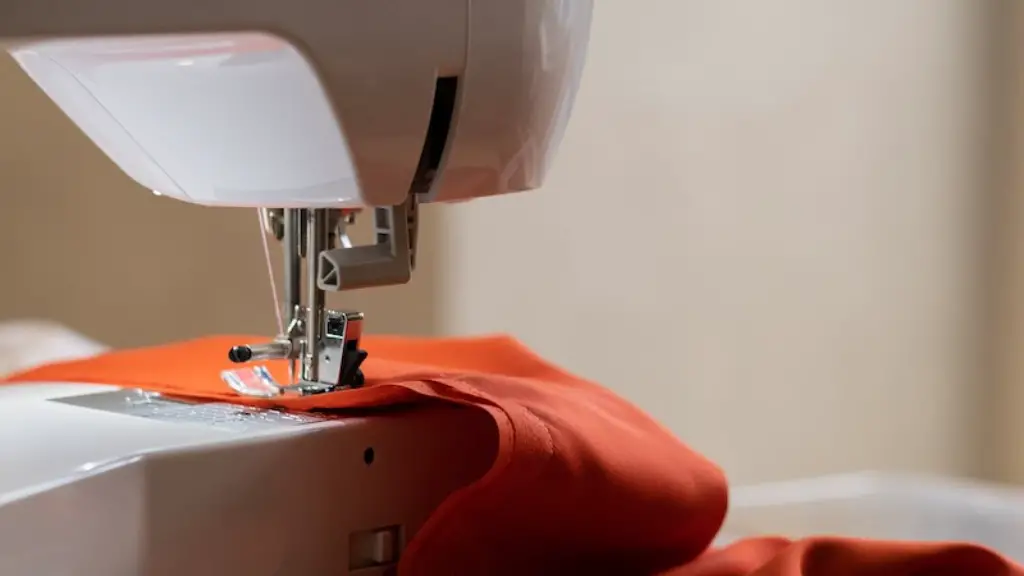Sewing machines are an age-old tool used to stitch fabrics together. You can make clothing, quilts, upholstery, drapery, or many other crafts with a sewing machine. But the sewing machine itself needs a place to sit to ensure that you can work comfortably and at the right height for your body type. This is where a sewing machine table comes in.
Sewing machine tables are important pieces of furniture that provide a way to properly support your sewing machine and make sewing much more comfortable. They come in various sizes and designs, allowing you to choose the perfect one for your needs. The table’s height should be adjustable so that you can position the machine at the correct working height – knee level if possible. The table should also have a broad surface to spread fabric easily, along with ample storage space for your sewing tools and supplies.
The most important feature of a sewing machine table is the stable mounting surface. A surface mounted directly on the table is best because it keeps the machine secure while you are sewing and prevents it from wobbling or sliding around. The surface of the table and the supporting surface should be made of a strong material like MDF or Plywood for added safety. Additionally, many tables come with a built-in extension table that can be used to support larger fabrics.
Another important factor to consider when buying a sewing machine table is ventilation. Overheating can be a serious problem for sewing machines, especially when the machine is running for long periods of time. Therefore, it is important to ensure that your machine has adequate air circulation and ventilation in the table, to keep it running properly.
You also need to make sure that your sewing machine table is easy to use and set up. Ideally, the table should have features such as a fold-out shelf, a drawers, a cutting surface, and adjustable height settings. A well-built table should also have a robust, level base to ensure stability during use.
Once you have chosen the right sewing machine table, you may still need to do some additional work to make it the perfect working space. For example, you may need to cover the surface with a soft cloth or cushion to make it more comfortable to sew on, or even install corner braces to give maximum stability.
Insights and Analysis
Having the proper table for your sewing machine is essential for comfortable and efficient use. Without it, you risk getting tired quickly, having to constantly adjust your position, or even damaging the machine. A sewing machine table should provide good support and ventilation for the machine, be easy to use, and be adjustable for the ideal working height. Ultimately, you should put some thought into the type of table you get and the features it offers to ensure you get the most out of your sewing machine.
Data and Perspecctives from Experts
According to experts, the ideal height for a sewing machine table should be knee level or slightly above, to help you maintain a good posture while working. The type of material used should also be strong and durable, to provide good support and stability while sewing. Additionally, make sure the design offers sufficient ventilation to prevent your machine from overheating.
When setting up the table, experts advise to use equal amounts of weight between each leg of the table for maximum stability. You may also want to place corner braces for extra support, and soft cushioning to make it more comfortable to sew on. Furthermore, make sure the height is adjustable and the surface flat, at the precise working height for your body type.
Background Info
Sewing machines are machines used to stitch two pieces of fabric together. Despite their many uses, sewing machines require a place to sit to make the whole process easier, more comfortable and efficient – this is where sewing machine tables come in. Sewing machine tables come in various sizes and designs and are usually made of strong and durable materials like MDF or Plywood. The tables provide a stable and level surface to support the sewing machine. They should also have adjustable height settings, plenty of storage space, and adequate ventilation.
Industry Trends
In recent times, there has been a growing demand for sewing machine tables due to the increasing popularity of sewing. With the rising demand, manufacturers have begun offering stylish and modern designs for their tables. There has also been a focus on developing tables that are not just aesthetically pleasing, but are also ergonomically designed to provide maximum comfort and efficiency when sewing.
Advantages and Disadvantages
The main advantage of using a sewing machine table is that it can make sewing a much more pleasant experience by providing the correct height and level of comfort. Additionally, it allows you to keep your tools and supplies organized, while providing adequate ventilation to prevent overheating. However, it is important to remember that the table should be chosen carefully, as there are different features available that can make a big difference. Moreover, more advanced models may be expensive, so consider your budget when choosing the right table for you.
Sewing Tips
When using a sewing machine table, input from experts can come in handy. First, make sure your cotton thread is unwound before use, as tangled thread can cause malfunctioning of the machine. Additionally, use the same type of thread for the entire job and make sure no part of your foot gets close to the needle as it can cause damage. Finally, you should regularly oil or lubricate your machine to ensure optimum performance.



